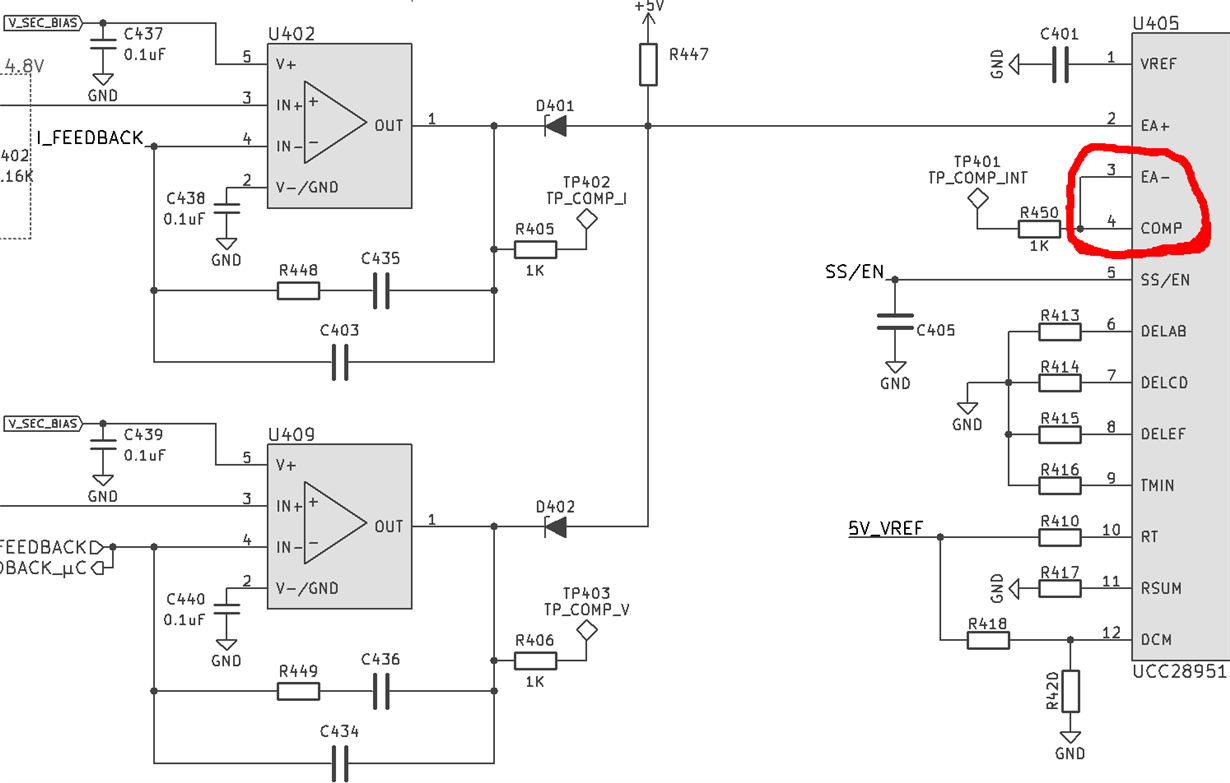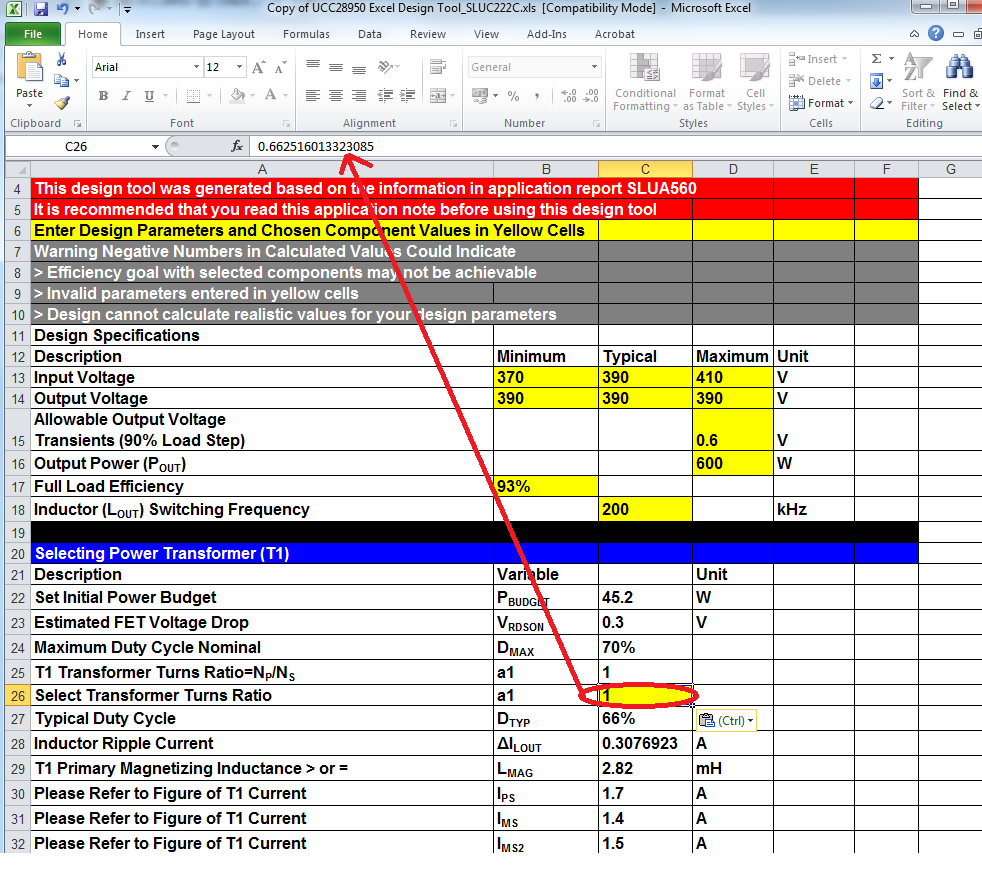Other Parts Discussed in Thread: LM4132-Q1, UCC28951, UCC28950
Hallo E2E,
I am designing an onboard charger, trying to verify if my understanding is correct.
Question 1: External Error Amplifier
I am sketching an error amplifier part of the circuit and wanted to have automatic CC/CV transitions and had referenced it with the TI training series. When I shorted the EA- and COMP pin makred in red, means that the internal error amplifier will then be "disabled" and whatever sensed on EA+ pin will be use to control the unit, correct?
The TI training series suggested to use LM4132-Q1 as reference voltage source, but the part shows that it can provide the maximum reference voltage up to only 4.1V. Why is the lower Vref was chosen in the TI training series and not some 5V Vref based on what the UCC28951-Q1 provided?
What are the considerations i needed to look for when selecting the value for the zener diodes D401, D402 (e.g. zener voltage, and torlerance)?
Question 2: Transformer for 400V Operation
I am trying to figured out the transformer specification of the design, and based on the calculation on the datasheet. The transformer turns ratio was calculated to be close to 1 (400V PFC BUS to ~400V output). Is it normal to have this transformer wind at 1:1 ratio?
Is there any design review of such an output voltage operation?
Regards
Natthapol Vanasrivilai



